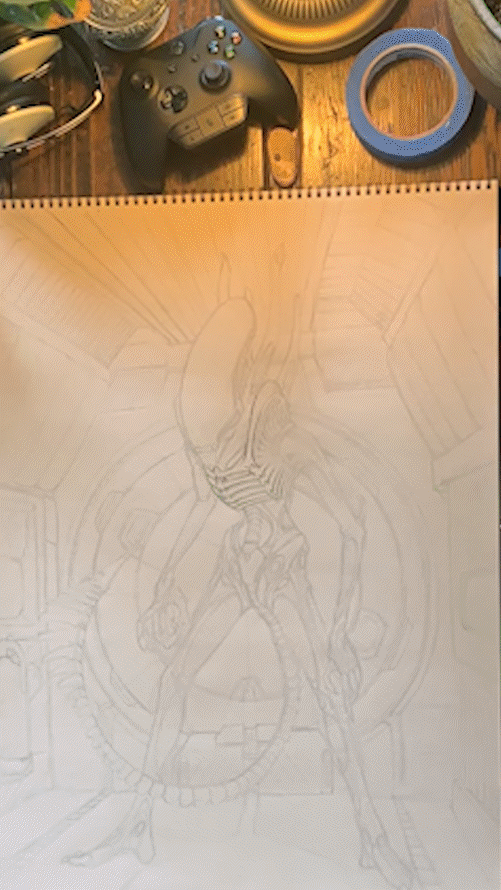
About
me
Doodle bug
I grew up in two different homes outside of Pittsburgh PA. My father is a graphic designer and my mother is a writer. Wanting to impress the both of them I picked up a visual acuity and the art of story telling. Sometimes I’lI debate whether I was born with a talent or I just received the necessary encouragement to develop.
The first decade and half of my work was in graphite. It wasn’t until I started to create art digitally that I picked up a new passion for color and all its possibilities. I have never taken any classes or received any formal training. I truly enjoy the challenge of always outdoing my last piece.
team up
start by providing me with a creative brief.
I will give you 3 concepts to pick from.
We will have 3 rounds of revisions.
You get personalized artwork.
I get to eat.
My Process
Traditional and digital have two very different approaches. Traditional keeps your technique sharp and digital puts you in an environment that if you can think it, you can make it. The biggest challenge I personally face with creative work is keeping myself engaged with the project. My selection process for the work I take on really just boils down to what excites me. I need to approach it with a new style or a unique light source to maintain that excitement through out the process.
Traditional artwork starts with a hazy sketch of what the final product will be. Establish all the elements, composition and light sources. Move on to inking all the line work, being careful to not outline the elements but really just provide the first bit of shadow work. Break out the markers to apply bolder shadows starting with from light to dark to minimize risk of a blemish or worse. It’s important to save all the highlights for the last stage for a few reasons. Highlights are often on top of shadows and it makes sense to layer it last. But mainly it’s the carrot at the end of a stick. It’s the final touch that brings the whole piece to life and it really only take a matter of minutes in most cases.
Digital artwork starts when you least expect it. In most cases it’s seeing something online or on a walk that strikes you a certain kind of way. From there, gather more reference material to help evoke that same feeling that started the idea. Sketch out the line work in a quick and dirty way. Squint your eyes to see if that composition is working. Repeat the last two steps until even just the line work would worthy of some wall space. Next pick a simple color palette and lay down big chunks of those colors behind your line work. Within each of the those chunks of color start to shade each of the objects with slight deviations from your original color palette. From that point on its just a question of how detailed do you want your end product to be. The amount of time you spend with something doesn’t always correlate to the quality of the end product. Sure every great piece has at least a few late nights invested into it but its the thought and strategy that really brings it there.










